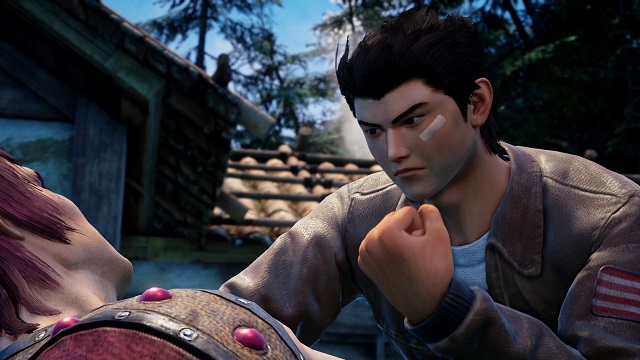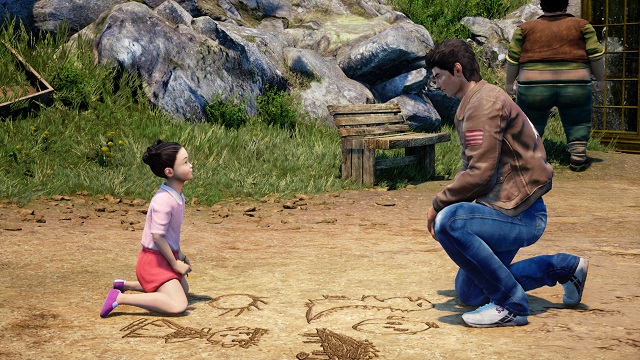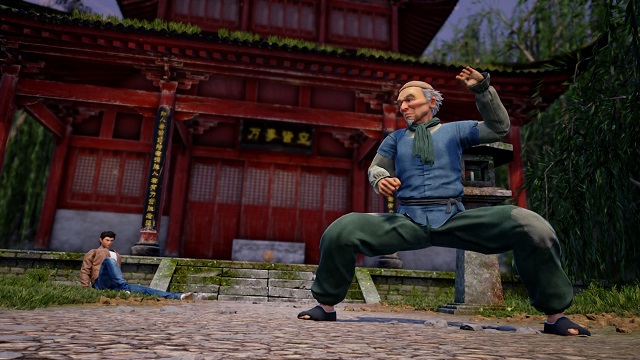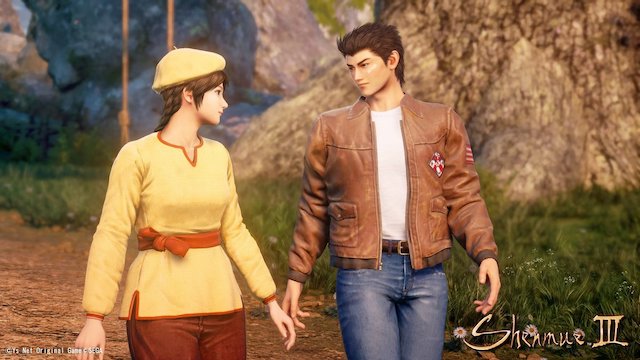It’s been 18 years since Shenmue 2 released on the Sega Dreamcast. In that time, the gaming landscape has irrevocably changed.
Expectations in game design have shifted, yet Yu Suzuki, the brainchild behind the Shenmue franchise, has seemingly changed very little.
For better or worse, Shenmue 3 feels like a game that was made in the early 2000s. I mean that as both compliment and criticism. Shenmue 3 embodies the inherent yin and yang of such a long-awaited sequel. It is both wonderfully endearing yet perniciously disagreeable.
There is no way Shenmue 3 could possibly live up to the long-standing hype surrounding it. Yet it somehow manages to capture the magic of the series. And it does so in ways that such protracted and long-gestating sequels can rarely fathom.
Shenmue 3 Review: Is That So?

Shenmue 3 quite literally begins where Shenmue 2 leaves off. Since the series so tightly revolves around its story, there is little reason to talk about its beats here and risk spoiling the narrative core.
What is worth mentioning is that true to form, Shenmue 3‘s plot doesn’t move quickly. Unsurprisingly, comparatively little of the overarching storyline is tied up in throughout the game.
Suzuki has said Ryo’s journey has perhaps a few more games left in it. Consequently, he’s a creator left to weave plot threads at such a tepid pace it’s surprising Shenmue 3 goes anywhere at all.
As the game’s opening hours crawl by, Ryo speaks to villagers, uncovers mundane clues, and works odd jobs to make ends meet. Most villagers, shopkeeps, and mini-game operators know next to nothing about anything, forcing you to ask everyone you see the same questions with varying results.
Often, those results point back to an NPC you just spoke to — who now magically knows something.
Unraveling mysteries in such a fashion is a staple of the Shenmue series, but such an over-reliance on the mechanic feels a bit outdated in 2019, especially considering the game’s morbid reliance on repetition. You can’t help but chuckle when Shenmue 3 so obviously works on specific conversation triggers to move its story along.
Then again, this is a game absolutely tethered to its predecessors. In that way, Shenmue 3 excels at carrying the proverbial torch. Despite not being able to skip many dialog sequences — where every vendor reminds you they sell goods and each character repeats to you what Ryo just said — the game’s voice acting is varied and surprisingly solid.
Every character oozes personality, and it feels like Ryo is always speaking with someone unique, not just a cardboard caricature. Walking away from 30-plus hours of Shenmue 3, I feel like I know its characters in ways that some other games can only hope to accomplish.

Between these moments, Ryo hones his martial arts skills to up his attack power and partakes in mini-games to increase his endurance. While Ryo brings with him all of the moves he learned in Shenmue and Shenmue 2, there are dozens more to learn and master in Shenmue 3.
This is done by buying or trading for skill books with the game’s many vendors in Bailu Village or the city of Niaowu. Each skill book unlocks one new fighting move, and these moves are mastered at dojos or by sparring with certain NPCs in the world. The point is to increase Ryo’s attack level and the damage he deals to opponents. And doing so feels more compelling than the system found in the first two games.
Although move inputs can be memorized as they were in Shenmue and Shenmue 2, any move can also be assigned to a hotkey in Shenmue 3. It’s a nice quality of life addition that affords legacy players granular control of Ryo’s moveset and new players the chance to fight without hours of real-life practice.
Further feeding into Shenmue 3‘s Kung Fu progression system, Ryo’s health is tied to his overall endurance, which is used for everything he does in the game. Whether walking or running, sparring or fighting, every action requires some bit of endurance and, by proxy, health.
Ryo’s endurance meter can also be increased by training at dojos, though not by sparring. Instead, three specific mini-games increase endurance: one-inch punch, horse stance, and rooster step. While some might decry the reliance on single button presses or simply moving a control stick in a specific direction, I found these activities reinforced Shenmue 3‘s ethos of patience.
In many ways, playing Shenmue 3 is like playing an elongated training sequence in Bloodsport or The Karate Kid. Ryo might be able to take down one group of thugs with minimal training, but it takes a lot more patience and conditioning to defeat the next group that comes his way.

That idea of patience, of nothing good comes easy, pervades the rest of Shenmue 3 as well. Though it can certainly be seen as a grind, the game’s economy ties directly to progression in several ways.
Early on, this means getting money by chopping wood, fishing, gambling, or selling herb and capsule toys. Later, Ryo can wrangle ducks and, to any Shenmue fan’s delight, drive a forklift. However, all of these things take immense amounts of patience to complete. Each is objectively laborious in its own way, and none pay large sums.
For the most part, that’s OK. Shenmue has always been known for its mini-games and activities. Along with the Yakuza series, that’s part of Shenmue‘s draw. Issues arise, however, when story progression is tied to tremendously expensive items. Forcing players to spend entire in-game days working to make ends meet doesn’t feel empowering — it feels patronizing. Doubly so when it’s multiple days in a row.
That feeling is compounded when Ryo has to pay for his lodging and food, the latter of which refills Ryo’s endurance and health. Each of these are mandatory expenses in Shenmue 3; you can’t escape them no matter how hard you try.
Spend too much money on capsule toys, arcade games, and steamed buns because you want to experience everything the game has to offer, and you might find yourself indentured to your forklift or forced to fish for five in-game hours just to walk across the map.
Things become so expensive later on that I found myself working multiple jobs, and I was reluctant to play any of the mini-games because I so desperately wanted to move on with the story. Whereas combat makes you feel like you’re in an amazing 80s Kung Fu movie, Shenmue 3‘s economy sometimes too accurately reflects day to day life.
Shenmue 3 Review — The Bottom Line

Pros:
- Mesmerizing world full of life and beautiful detail
- Surprisingly well-voiced cast of memorable characters
- Addictive mini-games and activities
- Fun combat with quality of life additions
- Wonderfully powerful soundtrack
Cons:
- Poor story pacing leads to no real resolutions
- Economy creates unnecessary narrative bottlenecks
- Tying endurance to health can be wildly irritating
- Unskippable dialog sections lead to eye-rolling repetition
- QTEs don’t always quickly respond to inputs
Shenmue 3 is a game made for Shenmue fans. It’s a game unapologetically married to its past. At its strongest, it recalls the halcyon days of the Dreamcast, harkening to the nostalgia of a title well ahead of its time. At its weakest, it succumbs to an unwillingness to innovate, an irony not lost on fans who remember how the first game sought to reinvent the RPG.
Though I find parts of Shenmue 3 cumbersome and vexing, I continually find myself pulled back to the game. The beautifully-realized world brims with vibrant life and memorable characters. The mini-games and activities are fun and even relaxing when taken in moderation. And combat has evolved into a system both inviting to newcomers and complex enough for long-time fans.
It’s true that Shenmue 3 doesn’t exactly hold up by today’s standards. But I’m not sure it’s a game meant to be measured by today’s standards. Decidedly old-school in almost every single way, Shenmue 3 is hard to judge in any other way.
[Note: A copy of Shenmue 3 was provided by Deep Silver for the purpose of this review.]







Published: Dec 2, 2019 11:40 pm